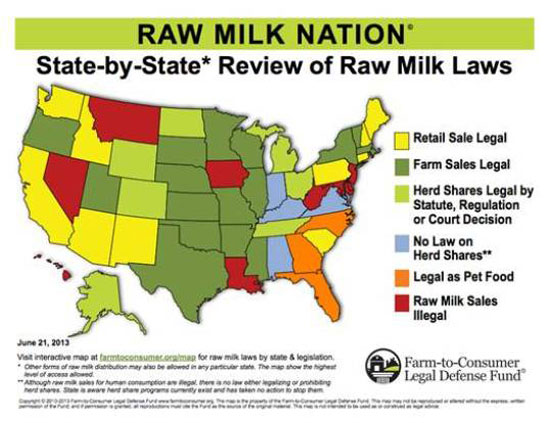Making Clean Raw Milk: A Simple Guide for Small-Scale Dairies
By Nick Zigelbaum | Mother Earth News
The Importance of Testing Milk (Raw and Pasteurized) and Your Animals.
One big benefit of running the private and FDA-certified Bob-White Systems Dairy Lab is that we get to see what works and what doesn’t work to keep milk clean. “Clean,” for our purposes, means that it passes Vermont’s Tier II Raw Milk Standards, which happen to be some of the most stringent in the country, more so than federally regulated pasteurized milk standards. At the lab we perform FDA-certified testing to ensure raw milk producers are compliant with Vermont’s standards. We also perform non-FDA certified tests for diagnostic services. That means we see all kinds of milk, with all kinds of problems, and we help producers troubleshoot many different issues.
Vermont’s Tier II Raw Milk Standards require that raw milk intended for retail sale pass four tests; Total Bacteria Count below 15,000 cfu/mL, Coliform Count below 10 cfu/mL, Somatic Cell Count below 225,000/mL (500,000/mL for goats), and no Antibiotic Residue found. “cfu/mL” stands for Colony-Forming Units per milliliter; bacteria form colonies, and this is the number of colonies per milliliter of milk. Antibiotic residue looks for traces of cow penicillin or other antibiotics that could affect people with antibiotic allergies and probably contribute to the creation of the notorious MRSA and other antibiotic resistant bacteria. Every state has it’s own set of regulations and laws regarding raw milk, more info can be found at the Farm to Consumer Legal Defense Fund and the map below.
Federally regulated, commodity raw milk for pasteurization must have a Total Bacteria Count less than 100,000 cfu/mL and a Somatic Cell Count less than 750,000/mL (1,000,000/mL for goats). Pasteurized milk must have less than 20,000 cfu/mL of bacteria, 10 cfu/mL of Coliform and no requirement on somatic cell count (they don’t increase after leaving the cow). It’s important to note that Vermont’s Tier II raw milk is “cleaner” than pasteurized milk you buy in the store. However, the fact is that failing these test standards doesn’t mean the milk is harmful. A high count only means the milk was produced and handled in a way that could support harmful pathogens, were they present. In other words, if harmful bacteria were to enter your production practice, it could flourish, but it might not be there at all. These test standards are the tools we currently have to assess milk safety, so that’s what we’re going to use.

